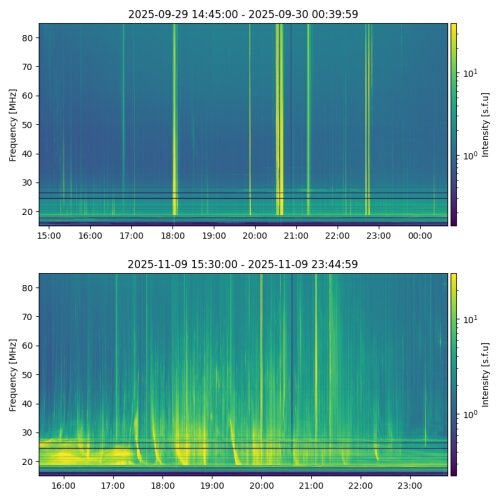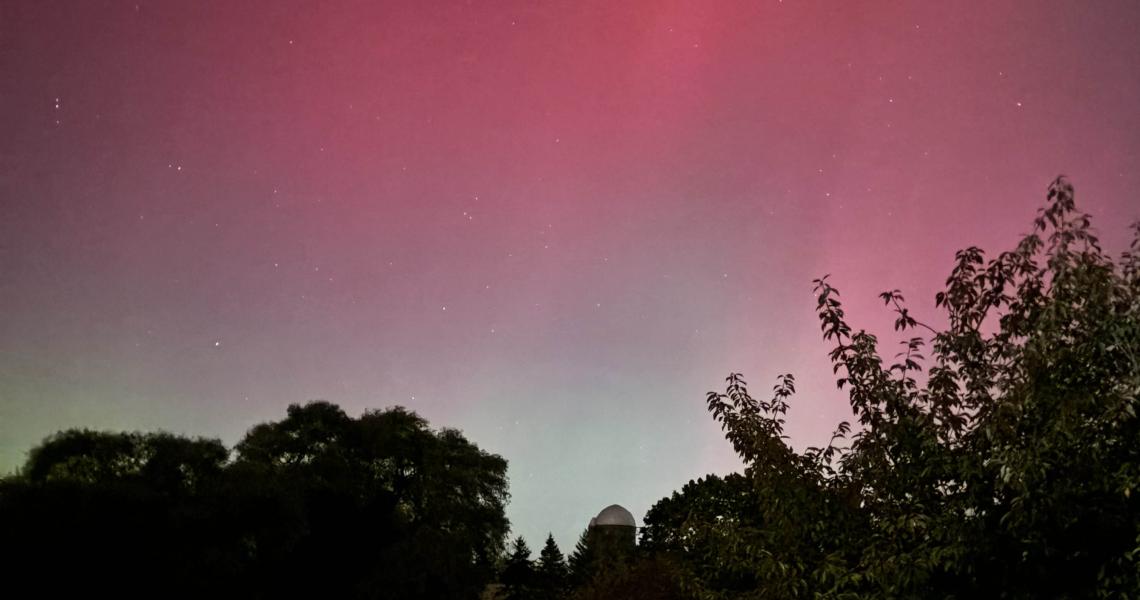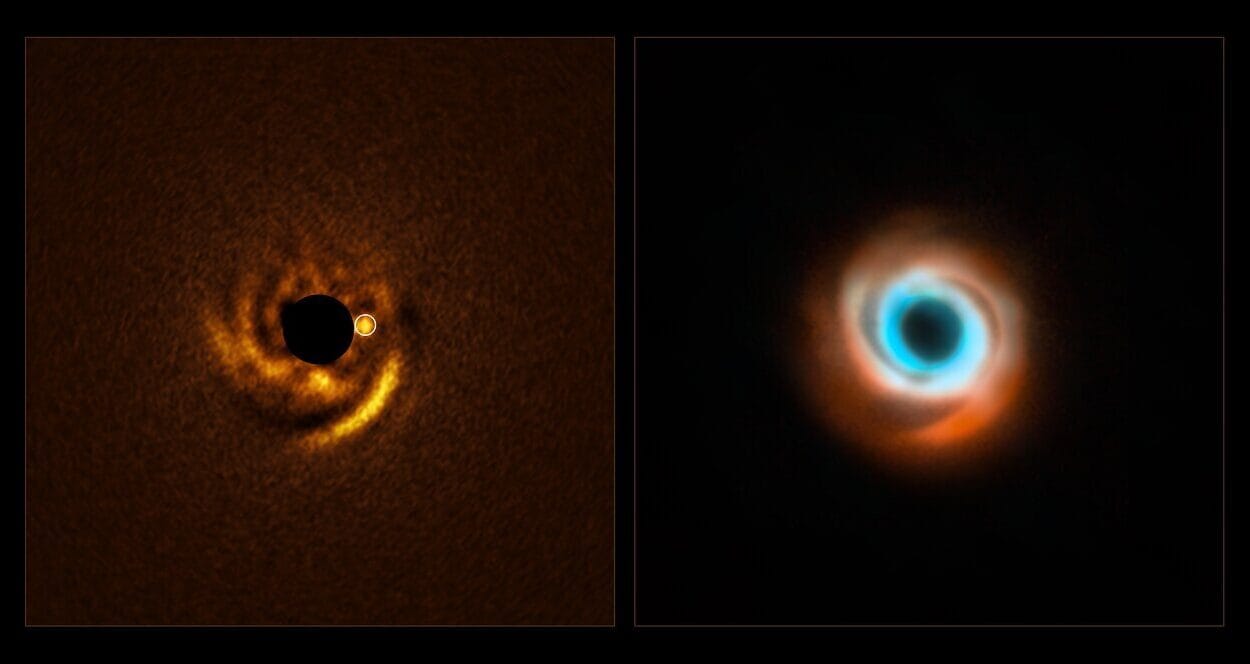It wasn’t just another night sky—on November 9, 2025, something extraordinary was unfolding across the heavens. A series of powerful solar flares erupted from the Sun, casting eerie, vivid auroras that stretched farther than usual, making their way from the northernmost reaches of Europe all the way to Florida. People in places where the northern lights are a rare sight suddenly found themselves gazing up at a cosmic light show, wondering what had caused this unexpected spectacle. But behind the beautiful chaos, a far more insidious ripple effect was taking place—one that would alter the very fabric of Earth’s atmosphere.
For researchers at the New Jersey Institute of Technology (NJIT), this was more than a spectacle—it was a golden opportunity to study the invisible forces at play in our upper atmosphere. Thanks to the sophisticated radio telescopes at NJIT’s Center for Solar-Terrestrial Research (CSTR), scientists were able to track the immediate consequences of the solar flares and uncover some of the more hidden impacts of this cosmic event. Their observations revealed a jarring disturbance in Earth’s ionosphere—a vital layer of the atmosphere responsible for carrying radio signals, ensuring GPS accuracy, and maintaining satellite orbits.
The Unexpected Power of Solar Flares
It all started with a burst of solar energy from a region on the Sun known as AR4274. Over the course of five days, this one active area unleashed a flurry of X-class flares—four of them, in fact, an unusual amount to come from the same region in such a short period.
“We’re talking about an X1.7 flare on November 9, followed by an X1.2 on November 10, an X5.1 on November 11, and an X4.0 on November 14,” said Bin Chen, a professor of physics at NJIT. “That’s a very productive stretch of activity.” But it wasn’t just the flares themselves that caught Chen’s attention—it was their lasting effects on Earth, felt far beyond what we typically associate with solar events. This was a powerful reminder of just how connected our planet is to the cosmos.
X-class flares are the strongest type of solar flare, and their effects ripple outward, disturbing the solar system in unpredictable ways. As these flares erupted, they sent shockwaves toward Earth. The resulting coronal mass ejections (CMEs)—streams of charged particles that the Sun shoots into space—triggered a major geomagnetic storm. This storm wasn’t just confined to the high latitudes, where auroras are normally seen. This time, the auroras extended far beyond their usual range, reaching even the southern parts of the U.S. as far as Florida.
“The aurora chat group I’m in was going wild,” said Lindsay Goodwin, an assistant professor at NJIT and an expert in ionospheric science. “People were sending images from places that almost never see northern lights. It was truly special.”
But while the auroras dazzled onlookers, something far less visible but no less important was unfolding in the ionosphere—a plasma-filled region of Earth’s upper atmosphere that plays a crucial role in communications and navigation.
How Solar Flares Shake the Ionosphere
While the auroras were the show-stealers, the ionospheric disturbances were the star of the scientific story. For ionospheric scientists like Goodwin, the way these flares stirred up the ionosphere was as remarkable as the auroras themselves.
Using the radio telescopes at the Owens Valley Solar Array (EOVSA) and the newly operational Long Wavelength Array (OVRO-LWA) at the Owens Valley Radio Observatory, researchers tracked the flares’ aftermath in real time. The data they gathered spanned a wide range of radio frequencies—from the microwaves similar to those used in satellite communications to the low-frequency decameter waves, akin to those picked up by FM radio.
“Normally, OVRO-LWA radio data shows neat, nearly vertical bursts known as type III radio bursts,” Chen explained. “But after these flares, the bursts were curved and chaotic at lower frequencies, a clear sign that the ionosphere had been disturbed.”

This was the physical signature of the ionosphere being shaken, and for scientists, it was like reading the shockwaves from a cosmic earthquake. The turbulence in the ionosphere didn’t just affect scientific instruments—it impacted technologies that billions of people rely on every day, from radio communications to GPS navigation.
A Dramatic Geomagnetic Storm
The flares and CMEs weren’t content with just disturbing the ionosphere. They also sparked a geomagnetic storm, rated a powerful G4 on NOAA’s five-point scale. The storm’s effects were significant: Earth’s magnetic field, which normally provides a protective shield against solar winds, was compressed dramatically as a result of the intense influx of solar particles.
Goodwin described the scale of the disturbance in striking terms: “The Dst index, which measures how much Earth’s magnetic field is compressed, plunged from about –40 nT to nearly –250 nT in just a few hours. That’s a huge shock to our planet’s magnetic defenses.”
This dramatic drop meant that Earth’s magnetic shield was momentarily overwhelmed, leaving our planet vulnerable to the full brunt of solar radiation. Thankfully, the storm didn’t cause widespread devastation, but it was a stark reminder of how fragile our technological infrastructure can be in the face of extreme space weather.
New Tools for Space Weather Science
In the midst of the chaos, the solar flare event also highlighted the growing capabilities of NJIT’s radio observatories. The newly integrated Owens Valley Solar Arrays (OVSA), combining both the EOVSA and OVRO-LWA, now provide an unprecedented view into solar and space weather phenomena, allowing scientists to track solar activity from its source in the Sun’s corona all the way to its impact on Earth.
“These observations are new in themselves,” said Chen. “The data from OVRO-LWA complements EOVSA perfectly, allowing us to follow space-weather effects from their origin in the solar corona all the way to their impact on Earth’s upper atmosphere.”
In addition to these instruments, Goodwin and her team, including undergraduate Jeremy McLynch, have introduced a novel tool to track the disruptions caused by solar storms. Their high-precision GPS receiver, affectionately nicknamed FLUMPH (after a Dungeons & Dragons creature), captures real-time data on how solar storms disrupt satellite navigation signals.
By pairing this GPS data with the radio frequency data, the team is able to examine the full impact of space weather on both the ionosphere and the technologies that rely on it. “Plasma irregularities caused by solar and geomagnetic activity disrupt radio and GPS communication,” Goodwin explained. “Pairing GPS measurements with LWA data lets us see both sides of the story—how the Sun shakes the ionosphere, and how that affects the technologies we rely on daily.”
Looking to the Future: What’s at Stake
As the Sun continues its 11-year cycle of solar activity, scientists expect similar storms in the near future. For now, space weather experts are still unpacking the full implications of this November event. Solar storms like these, though rare, can have far-reaching effects on our technology-driven society, potentially disrupting power grids, communications, and even the safety of satellites in orbit.
“Historically, extreme solar and geomagnetic events can disrupt power grids, interfere with radio communications, and threaten the safety and operation of satellites and spacecraft,” Goodwin said. “We’ve seen several major storms recently, and with the Sun nearing its peak activity cycle, more such events are possible.”
While these storms may become less frequent as the Sun quiets down in the coming years, Goodwin warns that such events will return in roughly 11 years. “When they do, understanding them will be even more important as we rely more on space technology and venture farther into space.”
In the meantime, this latest storm serves as a stark reminder of the powerful forces at play just beyond our atmosphere, and the growing importance of understanding how space weather can shape the future of our interconnected world.






